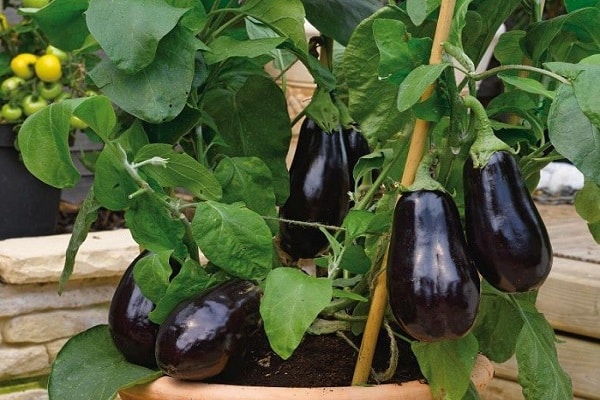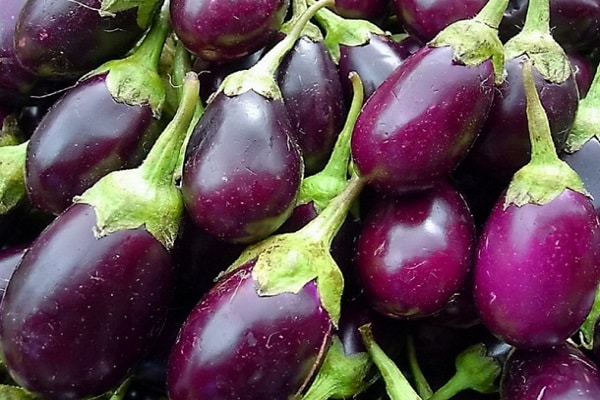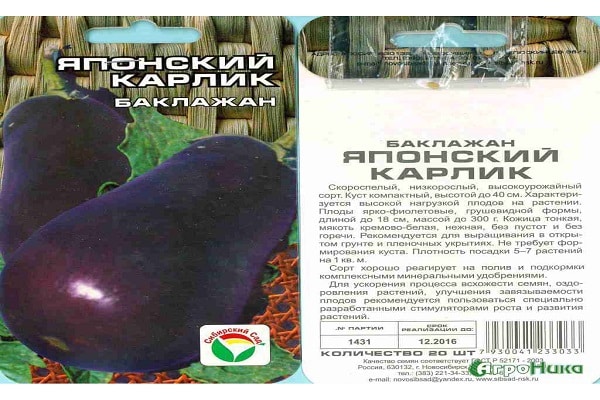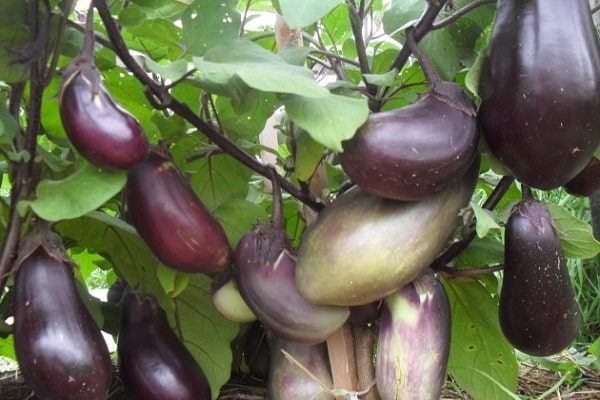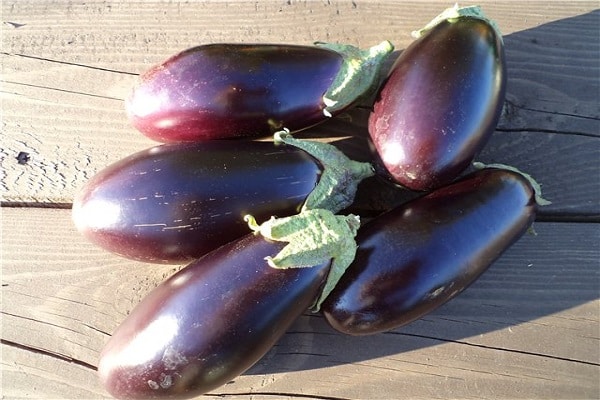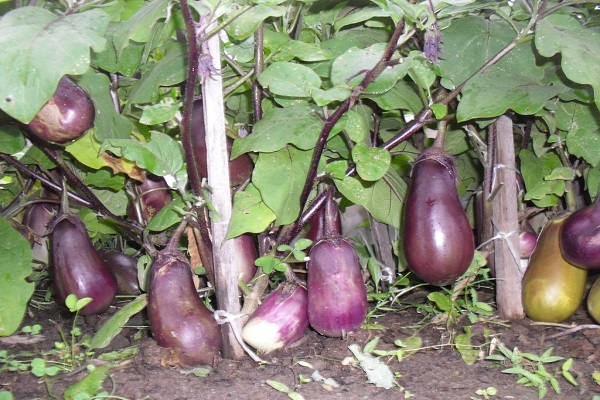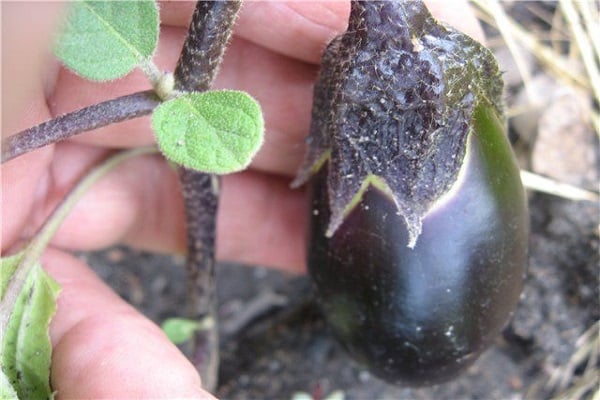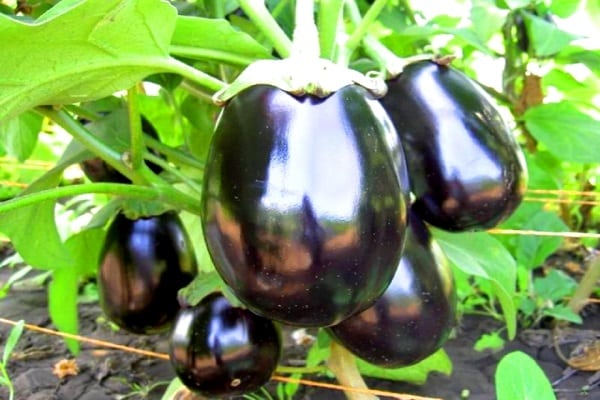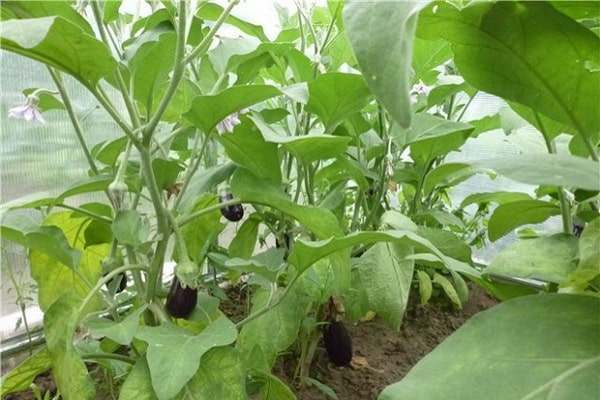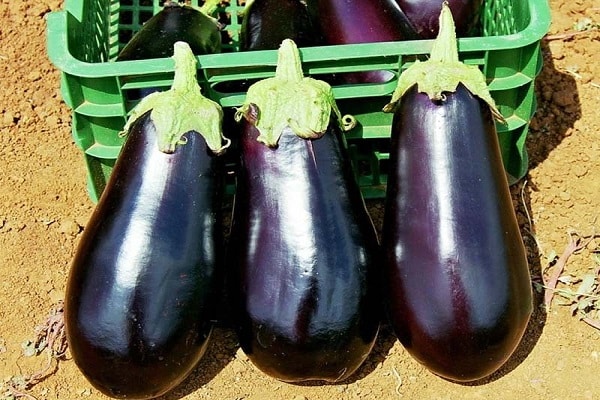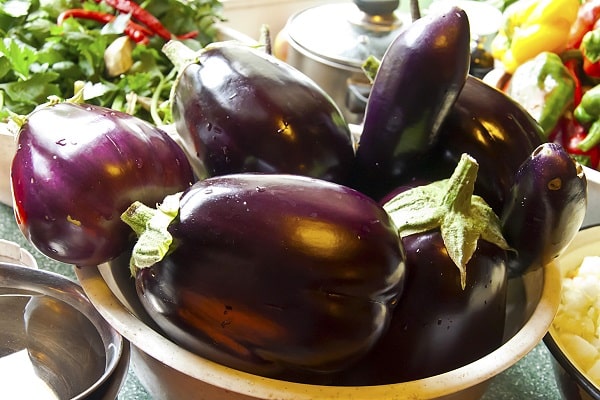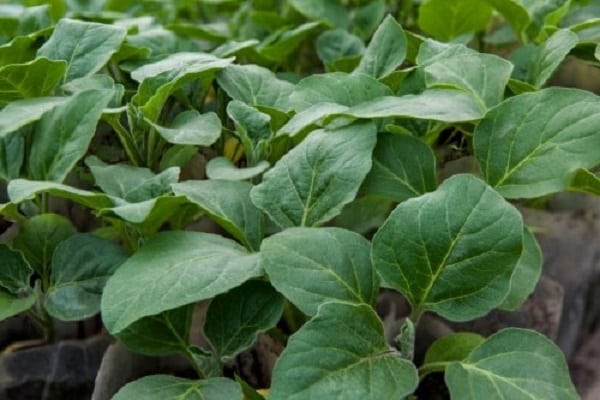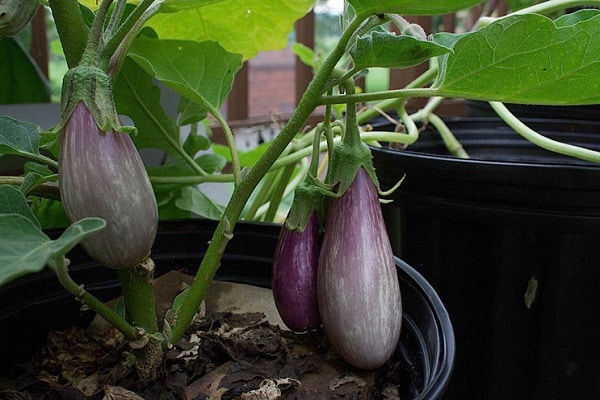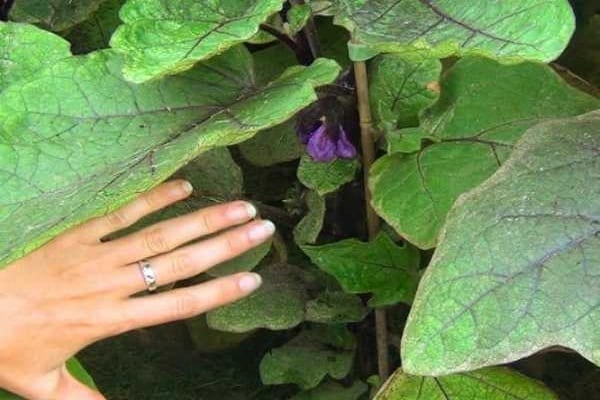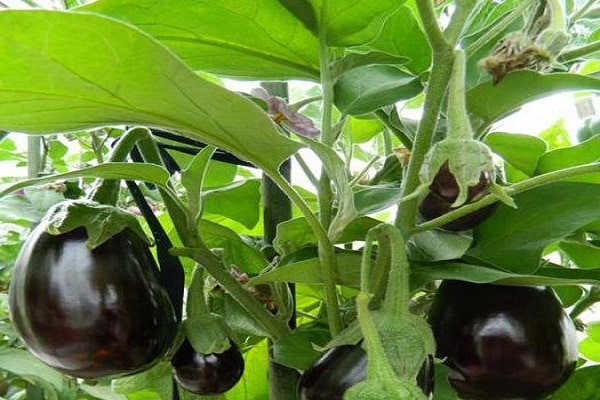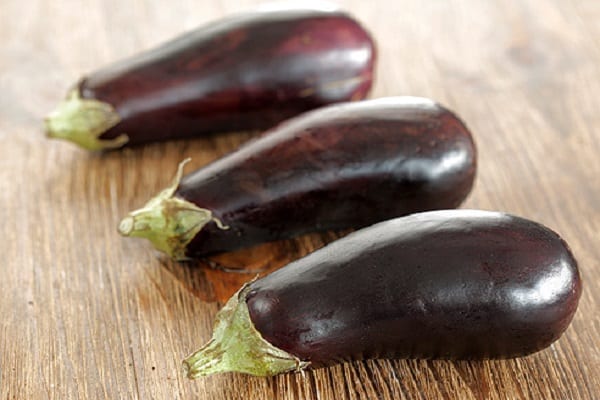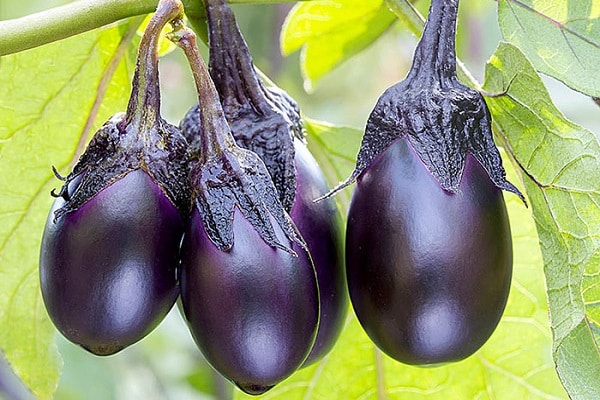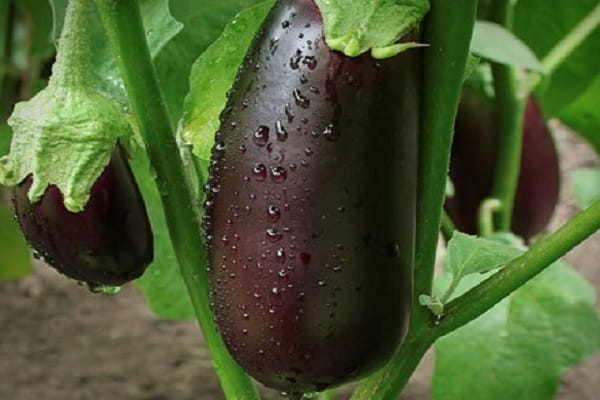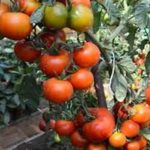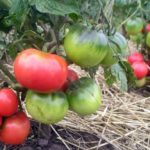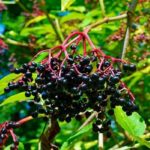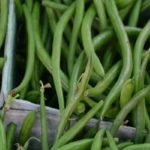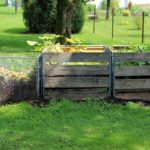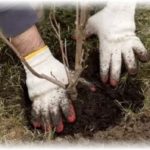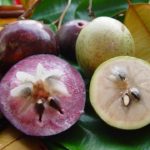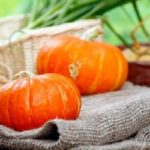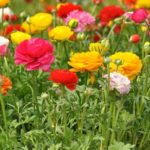Anyone who has ever encountered the Japanese dwarf eggplant variety knows very well that growing it is not particularly difficult and allows you to get a good harvest. Even cold and uncomfortable climatic conditions are not an obstacle to planting crops - the plants will reward you with fruits for your efforts. Before you start growing the variety, it is recommended to understand the peculiarities of agricultural technology, find out how to get good seedlings, and how to care for blue ones.
- Description of the Japanese dwarf variety
- Characteristics of eggplant
- Features of growing seeds
- Seedling
- Features of cultivation
- Preparing beds and transferring them to open ground
- How to plant seedlings
- Rules for caring for crops
- How to water a plant
- How to feed correctly
- Weed removal and hilling
- Trimming
- Pest Control Methods
- How to protect crops from diseases
- When and how to harvest
- Further storage
Description of the Japanese dwarf variety
Japanese dwarf is an early ripening variety recommended for growing indoors or directly in the beds. From the day the planting material is planted in the soil until the first wave of harvest is obtained, about 3 months pass. When grown in unfavorable cool conditions, this period will extend a little - the first fruits will ripen in 3.5-4 months.
The bushes of the variety are low, compact, rarely exceed 40 centimeters in greenhouse conditions. The leaves are large, semicircular. The stems are powerful and easily support the weight of the crop. The fruits are shaped a little like a pear and reach 20 centimeters in length. The weight is not impressive - only 300 grams.
The color of ripened fruits is dark purple, almost black. The pulp is light, pleasant to the taste, and does not have the bitterness characteristic of this culture. The fruits are used for various purposes - canned, frozen, used for main courses, salads.
Characteristics of eggplant
Japanese dwarf is recommended for growing in regions with temperate and even cool climates. In warm regions, seedlings are planted in beds; in cool regions, you will have to use a greenhouse, otherwise you will not be able to get a harvest.
The peculiarity of the variety is the duration of flowering. If the weather permits, the fruits are harvested until the coldest weather. In winter heated greenhouses, you can get fresh eggplants to the table even on frosty days. Productivity – up to 3 kilograms per bush.
The value of the Japanese dwarf is its taste, small amount of seeds, and tender pulp.
Features of growing seeds
To grow the Japanese dwarf variety and get a good harvest, regardless of the planting location (in a greenhouse or in the beds), you will need to first obtain seedlings. It is recommended to purchase seed material in the store - homemade seeds have low germination.
Before landing, make preparations:
- Prepare a solution of potassium permanganate (several grains of the drug per 200 milliliters of water).
- Dip the planting material into the solution, soaking time is a quarter of an hour.
- Remove any seeds floating on the surface.
- Dry the planting material that has sunk to the bottom on a napkin.
There is no need to germinate - it is recommended to start planting immediately. Do not make the holes too deep - 1.5 centimeters is enough. Irrigate the soil surface with water and build a polyethylene greenhouse.
It is recommended to use ready-made soil. Suitable substrate for growing seedlings or tomatoes. If you need to prepare the soil mixture yourself, mix turf (4 handfuls), sand (1 handful), humus (2 handfuls).
Seedling
It is recommended to start growing seedlings of the Japanese dwarf variety in March (from the 1st to the 15th). For gardeners in warm regions, the timing is slightly shifted - it is better to start germinating planting material in February (from the 20th to the 28th).
The first shoots appear during the second week after planting the seeds. Place the container on a light windowsill, be sure to create an artificial shadow - use a newspaper or a thin curtain.
Ventilation should be carried out daily - high humidity in the greenhouse will be detrimental to tender sprouts. Blooming of the substrate surface will lead to the development of bacterial and fungal diseases, and it will no longer be possible to save the plants.
Features of cultivation
There will not be any particular difficulties in obtaining young bushes ready for transplanting into garden beds. The main thing is to follow the rules of agricultural technology:
- carry out frequent but meager irrigation of the surface of the substrate with warm water;
- once a week, turn the container with plants on different sides to the sun (this will avoid stretching the sprouts);
- alternate watering with the addition of nutrients (use an infusion of ash - 50 grams of the substance per half liter of water).
Another important rule for growing is to monitor the temperature; the temperature in the room should be at least 27 degrees.
Preparing beds and transferring them to open ground
Beds for eggplant Japanese dwarf is recommended to be prepared in the fall. When digging, add humus and sprinkle the soil generously with wood ash. Blues like light soils, so you can add a small amount of sand.
The recommended pattern for planting the variety is 60 by 40 centimeters. Start moving young plants to the beds in early summer. For indoor soils, the desired transplant time is the 20th of May.
How to plant seedlings
Water the holes generously and irrigate the soil in which the seedlings are grown in advance. Replant plants without shaking the substrate from the root system. After planting, water again and apply a thick mulch layer (sawdust, bark).
If planting was done in beds, you need to monitor the air temperature for the first few days. At night it is better to cover the plants with mats or film. Only after the bushes begin to grow and take root should you stop using coverings.
Rules for caring for crops
Caring for a Japanese dwarf is not much different from raising others eggplant varieties. The main rule is to create comfortable conditions for plants - provide them with regular watering, nutrients, and start combating diseases and pests in a timely manner.
How to water a plant
To irrigate the soil, use only warm liquid. Excess moisture is detrimental to bushes - it is better to water more often, but add little water. A mandatory rule is to irrigate the soil along the surface of the soil, especially during the period of plant development. After fruiting begins, it is allowed to water the leaves, but do this only in cool, cloudy weather.
How to feed correctly
Fertilizing should begin 2-4 weeks after planting young plants in the garden. Fresh organic matter is strictly prohibited - it is a source of diseases for the little blue ones. For the first application of fertilizers, use mineral compounds. The last feeding is carried out with mullein infusion. The regularity of applying nutritional compositions is once every 2-4 weeks.
Weed removal and hilling
A mulch layer, laid down when replanting plants, will save you from weeds. If mulch was not used, you will have to do weeding, which is best done frequently, trying to loosen the soil at the same time as removing weeds.
Hilling is not necessary - the bushes are compact and hold securely in the ground. If the stem is too bare and the roots are washed to the surface with water, it is recommended to sprinkle them with a small amount of soil and apply mulch.
Trimming
For full development of plants, pinching is recommended. Once the bush has reached 30 centimeters in height, remove the top of the main stem. Watch the side shoots - you only need to leave 3-5 powerful branches, remove the rest.
Pest Control Methods
Pests on the Japanese dwarf eggplant include slugs and aphids. Treatments are carried out with insecticides or home remedies (infusion of pepper or tobacco, 50 grams of a pungent substance per liter of water). It is better to collect slugs by hand.
The use of chemicals is permitted during the growth and flowering period. Stop using medications 2-3 weeks before harvesting - plants are capable of accumulating harmful substances, which take quite a long time to be eliminated.
How to protect crops from diseases
The most dangerous diseases that can destroy adult Japanese dwarf plants are fusarium and blackleg. The use of drugs to combat diseases is not recommended. The only way to cope with diseases is to ensure the correct watering and temperature regime.
Excess moisture is completely eliminated - reduce the amount of water, carry out frequent loosening, remove diseased leaves and stems.
Preventive measures against Japanese dwarf diseases are regular treatments with Bordeaux mixture and copper sulfate. Be sure to ensure that the soil is moistened moderately - excess water is the main enemy of plants. It is also not recommended to thicken the bushes - this threatens the spread of diseases.
When and how to harvest
It is recommended to collect Japanese dwarf fruits during the period of technical maturity - the color of the eggplants should not be too dark. The blue ones will ripen in the storage room.
To harvest, use pruning shears to remove the fruit with a small part of the stalk. Immediately send for storage or recycle.
Further storage
To store the Japanese dwarf, use dark, cold rooms.The bottom shelf of the refrigerator or the cellar is suitable for these purposes. Place fruits in one layer in boxes.
Be sure to regularly check the condition of the eggplants. If rot or signs of spoilage appear on the blue ones, use them immediately for cooking, cutting out suspicious areas.
Japanese dwarf is a variety that has been recognized by many gardeners for its excellent taste and ease of cultivation. The only drawback of the crop is that the shelf life does not exceed 1 month, even if the required temperature conditions are provided, so it is better, after harvesting, to send the fruits for processing.

